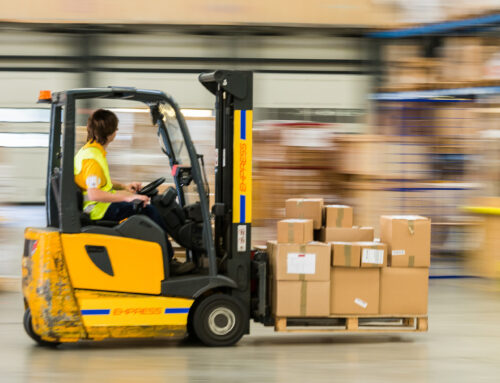As you probably already know, April 22, 2020 marks the 50th anniversary of Earth Day. What you may not realize is that the industrial wood and wood packaging industries were practicing good environmental stewardship long before sustainability and being environmentally friendly were as important to people as they are today.
Unfortunately, a lot of people still believe that our industry isn’t good for the environment. Earth Day seems like the perfect opportunity to dispel some of those common myths about our industry and its impact on the environment, and to set the record straight.
Myth #1: Wood Packaging Is Not Sustainable
Wood pallets, crates, and packaging are truly reusable, recyclable, and sustainable. Wood pallets, for example, can be re-used many times, and when they sustain damage, they can be repaired and used again. When wood packaging can no longer be repaired, it can be ground up into mulch or pet bedding. Then it eventually breaks down, returns to the earth, and helps new things to grow.
Add to that the fact that on average, 5,000,000 new trees are planted per day in the United States, and the growth of U.S. forests exceeds the amount of trees being harvested by 33%. That means that wood packaging proves to be one of the most sustainable resources in the United States.
Myth #2: Landfills Are Filled With Wood Pallets and Crates
As we discussed earlier, most pallets are recycled several times before they are too broken to be reused. According to a study on PalletCentral, conducted by Virginia Tech and the USDA Forestry Service, 95% of pallets are recycled or recovered into other products. Many landfill facilities also have programs in place to grind up wood products, which helps them to break down faster. If a pallet or crate does end up in a landfill, it’s biodegradable.
Myth #3: Using Wood Packaging Increases Your Carbon Footprint
A carbon footprint is the measure of greenhouse gas emissions associated with lifespan of a wood product. Pallets, crates, and other wood packaging products made of lumber harvested from a sustainable forest have a negative carbon footprint because the wood stores the carbon and it isn’t released into the environment. Companies concerned with their carbon footprint actually benefit from the use of wood packaging.
Myth #4: Wood Packaging Manufacturers Don’t Care About Trees
That’s crazy talk – We love trees! Trees are a renewable crop that’s harvested to make lots of wood products. In fact, when one tree is cut down, about 6 new trees are planted to take its place. In America, at least 1.6 billion trees are planted annually, and forest product companies are responsible for up to three quarters of a billion tree plantings per year, according to Bugwood.
As an industry, we love trees and we work very hard to be good stewards of our forests.
Myth #5: The Wood Packaging Industry Kills Trees to Make Pallets and Crates
A lot of people believe that trees are cut down specifically to build pallets, crates, and other wood packaging products. This couldn’t be further from the truth. The fact is that forests are actively managed, and they are only harvested to make building materials and furniture.
The wood used to build pallets, crates, and other wood packaging is the leftover wood that can’t be used for building materials or furniture. Trees are never cut down specifically to make wood packaging.
A Good Opportunity
Ultimately, Earth Day is a good opportunity for all of us to reflect on the things we can do to be good stewards of our environment. It’s not just about planting a tree, although that’s a great place to start. For us here at Conner, it’s about doing our part to keep the industry as green as possible and to continuously strive to make improvements.
Happy Earth Day!


![[PRESS RELEASE] Conner Industries Announces Website Dedicated to Integrated Packaging Division](https://conner.b-cdn.net/wp-content/uploads/2024/05/Conner-Packaging-Blog-500x383.jpg)



